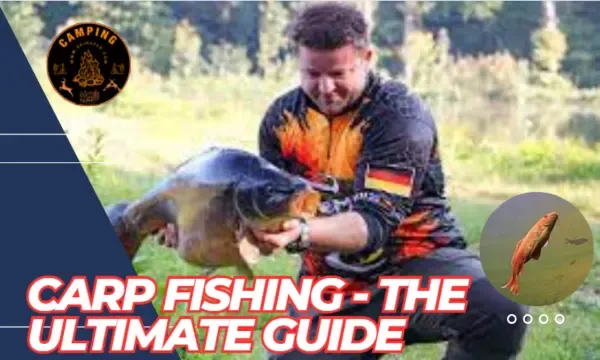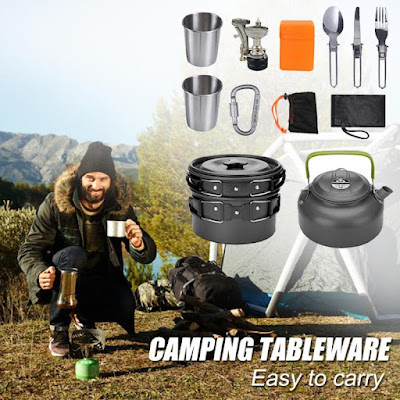Are you ready to dive into the exciting world of carp fishing? Look no further than this ultimate guide! Carp fishing is a popular angling pursuit that offers both thrill and relaxation for fishing enthusiasts From choosing the right equipment to mastering baiting techniques this comprehensive guide covers it all. Discover essential tips on locating carp hotspots understanding their behavior and unlocking the secrets to landing that prize catch.
Table of Contents
- Introduction
- Carp Fishing Techniques
- Essential Carp Fishing Equipment
- Choosing the Right Carp Bait
- Finding the Best Carp Fishing Locations
- Top Tips for Successful Carp Fishing
- Conclusion
- Frequently Asked Questions
Introduction
Carp fishing is a popular angling method that involves targeting and catching carp a species of freshwater fish known
for their size strength and challenging nature. This comprehensive guide will provide you with everything you need
to know to get started and master the art of carp fishing.
Carp Fishing Techniques
1. Float Fishing
A detailed description and step-by-step guide to float fishing for carp. Learn about selecting the right float setting
up your fishing rod and effective techniques to attract carp.
2. Ledgering
Discover the ledgering technique commonly used for carp fishing. Explore various types of ledgering rigs different
bait options and tips to improve your success rate in catching carp.
3. Spodding
Spodding is an effective technique for attracting carp to your fishing spot. Learn about spod rods spod mixes and how
to spod accurately to ensure a successful carp fishing session.
Essential Carp Fishing Equipment
When it comes to carp fishing having the right equipment is crucial for a successful and enjoyable experience. This
section will discuss the essential carp fishing equipment including fishing rods reels tackle and clothing.
Choosing the Right Carp Bait
Selecting the right bait is vital in carp fishing. Explore different types of carp bait including boilies pellets and particles. Understand how to effectively use baiting strategies to attract carp and increase your chances of catching
them.
Finding the Best Carp Fishing Locations
Discover tips and techniques on finding the best carp fishing locations including rivers lakes and reservoirs. Learn
how to study water conditions identify carp hotspots and choose the perfect swim for a successful fishing session.
Top Tips for Successful Carp Fishing
This section provides a compilation of expert tips and tricks to enhance your carp fishing skills. Learn about stealth
tactics handling carp weather considerations and other helpful insights to maximize your chances of catching carp.
Frequently Asked Questions
- What is the best time to go carp fishing?
The best time to go carp fishing can vary depending on factors such as the season weather conditions and location. However generally carp tend to be more active during warmer months particularly in spring and autumn when water temperatures are moderate. Early morning and late evening are typically considered prime times for carp fishing as they are more active during these periods. It's also worth considering factors like the presence of feeding areas underwater structures and weather patterns for successful carp fishing.
2. What is the optimal bait for catching carp?
The optimal bait for catching carp can vary depending on various factors such as location season and preferences of the fish. However some popular baits for carp fishing include sweetcorn. boilies. bread. worms. and pellets. It's always a good idea to research and experiment with different baits to see what works best in your specific fishing area.
3. How can I improve my casting distance?
Improving casting distance in fishing can be achieved through a few techniques and practice. Here are some tips.
A. Proper Technique: Mastering the correct casting technique plays a crucial role. Ensure that you have a smooth and fluid motion utilizing your entire body not just your arm. Practice your timing grip and release to maximize the distance.
B. Rod Selection: Using a rod with appropriate power and action for the type of fishing you're doing is important. Longer rods generally provide more casting distance so consider choosing a longer rod if distance is your primary focus.
C. Casting Weight: Adjusting the weight you cast can help you increase the distance. Using heavier lures or sinkers can create more momentum during the cast leading to longer distances. However ensure your rod can handle the recommended weight.
D. Line Selection: Choosing the right fishing line can also contribute to casting distance. Lines with lower diameter and less friction tend to glide through the guides with less resistance allowing for longer casts. Consider using braided or fluorocarbon lines which are thinner and have less drag than monofilament lines.
E. Backward Casting: Casting in the direction opposite to the way the wind is blowing can significantly improve distance. This technique takes advantage of the wind's resistance to help propel your cast further.
F. Practice and Timing: Regular practice is key to improving your casting distance. Pay attention to your timing release and the power behind your cast. Adjust and experiment to find the technique that works best for you.
Remember while increasing casting distance is important accuracy and precision are equally crucial. Keep practicing and over time you will see improvements both in distance and overall fishing skills.
4.Do I need a fishing license for carp fishing?
in general fishing license requirements can vary depending on your location and local regulations. It's best to check the specific fishing regulations in your area or consult with local authorities to determine whether a fishing license is required for carp fishing.
5. How can I prevent losing carp once hooked?
To prevent losing carp once hooked here are a few tips:
A. Use appropriate tackle: Make sure you have the right fishing line hooks and equipment suitable for carp fishing. Strong and reliable tackle is crucial to handle the strength and size of carp.
B. Set the hook properly: When you feel a carp bite give a firm hookset by swiftly and firmly pulling the fishing rod upwards. This helps in ensuring a secure hook placement in the fish's mouth.
C. Play the carp carefully: Once hooked carp are known to put up a strong fight. Avoid applying excessive pressure that could cause the line to snap. Instead maintain a steady tension on the line while allowing the fish to tire out.
D. Use a landing net: Having a landing net with a wide enough opening is vital for successful carp fishing. When the carp is subdued and close to the shore use the landing net to carefully scoop it up minimizing the chances of the fish escaping.
E. Maintain a controlled environment: Avoid sudden movements or loud noises that may startle the fish during the landing process. A calm and controlled environment reduces the chances of the carp breaking free.
F. Be prepared for the fight: Carp are known for their strong runs and sudden changes in direction. Stay attentive and be prepared to adjust your hand positions on the fishing rod to maintain control during these moments.
6. What is the average size of carp?
The average size of carp can vary depending on the species and environmental factors. In general common carp (Cyprinus carpio) can reach lengths of 24 to 31 inches (61 to 79 cm) and weigh between 11 to 33 pounds (5 to 15 kg). However it's important to note that some carp can grow much larger with record-breaking specimens reaching over 100 pounds (45 kg).
7. How deep should I fish for carp?
The depth at which you should fish for carp can vary depending on various factors such as the time of year weather conditions and the specific body of water you are fishing in. Carp can be found at different depths at different times so it's essential to consider the following:
A. Water temperature: In colder months carp may be found in deeper waters where the temperature is more stable In warmer months they may move to shallower areas to feed.
B. Time of day: Carp tend to be more active during early morning and late evening so they might move to shallower areas during these times.
C. Variations in the body of water: Different lakes rivers or ponds may have varying depths and structures that attract carp. It's helpful to research or consult local anglers to learn about preferred depths at your specific location.
Generally fishing with your bait or rig placed a foot or two off the bottom is a good starting point. You can experiment by adjusting the depth gradually if you're not getting any bites. Remember carp are known to feed off the bottom so it's often productive to target that range.
Additional Tips and Tricks in Carp Fishing
- Always use fresh bait to attract carp.
- Consider using bite alarms for better bite detection.
- Pay attention to wind direction for optimal fish location.
- Practice proper fish handling and care for catch and release.
- Stay patient as carp fishing requires perseverance.
- Keep your fishing gear well-maintained for optimum performance.
- Join local carp fishing communities for shared knowledge and experiences.
Conclusion
In conclusion, carp fishing is an exciting and rewarding endeavor for anglers of all levels. By utilizing various carp
fishing techniques, selecting the right equipment and bait, and finding the best fishing locations, you can greatly
enhance your chances of success. Remember to follow ethical fishing practices and regulations to protect the environment
and the fish population. Happy carp fishing!


.webp)



